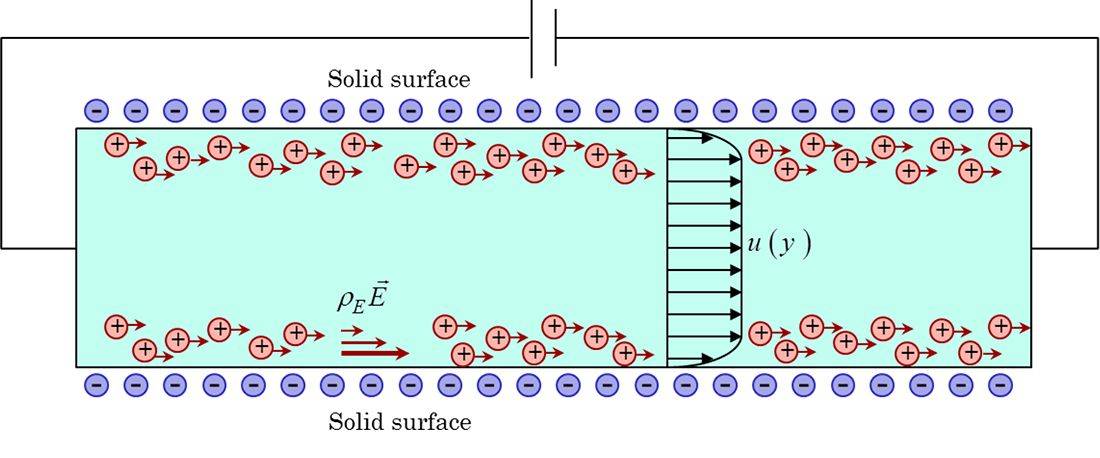Electrokinetics - Explosive Development
In the previous section we looked at various electrokinetic effects.
During the past 10 years the field of Electrokinetics has undergone explosive development, as a better understanding of molecular phenomena near different surfaces can open the door to brand new technologies in the fields of medicine, biochemistry, nanotechnology, engineering (e.g. solar cells, or electric car batteries - a very hot topic!) etc. Due to their immense growth potential, these fields have spent countless billions on research, resulting in some significant breakthroughs in recent years.
An important field of research is microfluidics, which studies the behavior, control and manipulation of small amounts of liquids (water or other solutions) in very small (micro- or nano-scale) channels - making its findings particularly relevant in understanding capillary phenomena inside damp walls.
Electroosmosis - New Discoveries
One of the most widely studied electrokinetic phenomena is electroosmosis, which is the movement of liquids in porous materials under the influence of electric fields.
Electroosmosis was discovered a little over two centuries ago in 1807 by F. Reuss, a German scientist working in Moscow. Due to its complexity, the mathematical modeling of the phenomena and the electrical double layer has only occurred about a 100 years later, in the early 1900s with the works of Helmholz (1853), Guy-Chapman (1910), Stern (1924) and others.

Electroosmotic flow in a capillary
The intense research and explosive growth in Electrokinetics has also included electroosmosis, leading to new discoveries in this field:
- DC electroosmosis: traditionally, the electroosmotic pumping effect was achieved with high DC voltages, typically requiring a few thousands of volts DC.
- AC electroosmosis: the effect of AC or pulsed voltages onto charged capillaries has not been studied until relatively recently, as the phenomenon was significantly more complex than its DC counterpart. Recent studies have however confirmed, that even small AC voltages can create in small capillaries pumping pressures of hundreds of atmospheres (bars) - a very significant pumping effect.
- Induced charge electroosmosis: one of the very recent major breakthroughs of this field was the discovery of the induced charge electroosmosis - that the presence of small external fields can also create electroosmotic pumping along capillary walls.
Summary
Here is a summary of the most important concepts from the video:
- The field of Electrokinetics has advanced significantly during the past 10 years, leading to many new discoveries.
- Electroosmosis in real life is a very complex phenomenon as it involves the movement of a charged fluid carrying irregularly shaped particles (called "broken symmetries" in the video) in irregularly shaped capillaries with variable surface charges. This results in a very complex set of phenomena.
- Mathematics can not always describe these complex phenomena. Simplification in earlier modeling (e.g. assuming perfect sphere particles moving in perfectly cylindrical capillaries), lead to the exclusion of some important (but complex) phenomena for decades, some of them just discovered recently.
- Induced fields can create electroosmotic flows resulting in the movement of water along the capillary walls. Irregular particles can even move sideways or spin under the influence of an AC field.
The Electrical Nature of Rising Damp
All these discoveries point in the direction that water movement in small capillaries is to a large extent driven by electric phenomena. Our in-house research also lead to the same conclusions, in line with other research papers published in the same field.
These findings can lead to to new technologies in the handling of rising damp, by reversing the capillary effect by altering the surrounding electric or magnetic fields.

